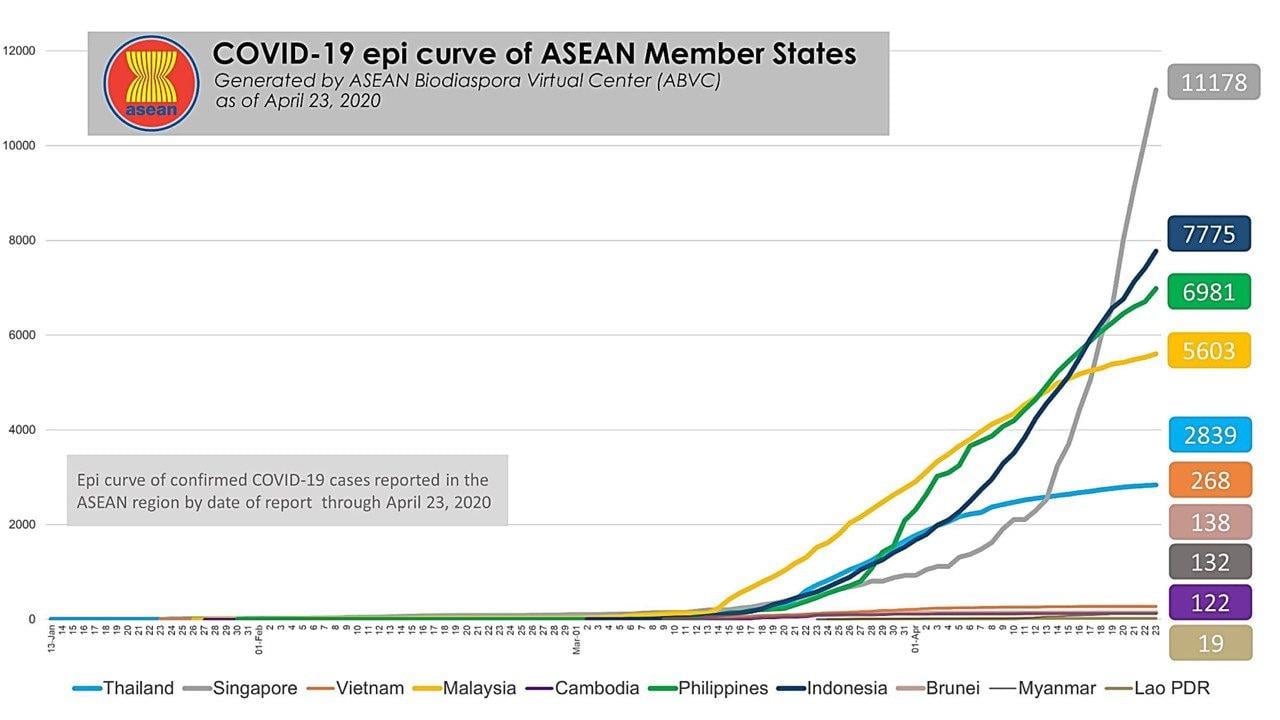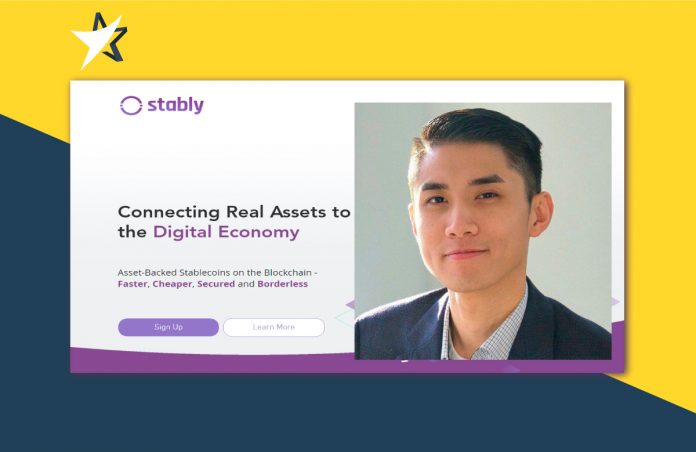Kory Hoang who started out his career with an education in the traditional banking & finance sector (Bank of America; Merrill Lynch) has been among the selected crowd of “Việt Kiều” who have spent the past two years on building a legitimate Blockchain-based business model and ultimately chose to relocate to their motherland.
As CEO & Founder of Stably, a Seattle-based USD-backed Stablecoin, he has been entering the “Stablecoin wars” of 2018 at a time when various projects launched in the aftermath of the last big “Crypto bubble” to challenge the market share of the overbearingly dominating Tether Stablecoin (USDT).
While originally based and grown up on the West Coast in Washington State, he has been returning back on the regular to his motherland Vietnam in recent times and also been supporting the local Bitcoin community with e.g. a talk about Algo-trading strategies in the volatile markets of Digital assets.
BV News: Hi Kory! We are certainly speaking at a very interesting and exciting, but also very challenging time. Before we dive deeper into that what the turbulences in the economy and markets might mean for firms like yours and the wider ecosystem as well as for society as a whole: Right when the Coronavirus crisis started to escalate a few weeks ago, you decided to move your team over from your original location in Seattle over to Vietnam.
For many people in the West certainly a very daring choice – what drove your decision and conviction, that Vietnam is the better place to hunker down during the global pandemic compared to the United States?
Kory Hoang: It was a series of fortunate events, to be honest. I guess my luck since our seed round is still going strong.
We decided to open up a new office in Ho Chi Minh City in February of this year, mainly to hire local developers to build a leaner product team. At the moment, we have a total of 16 employees: 3 US team members who are still based in Seattle, 10 team members who are based in HCM—5 Vietnamese, 1 German, 1 British and 3 Americans (including myself and our CTO David)—and 1 Vietnamese team member in Hanoi as well as 2 more team members in Surat, India. As you can see, half of our team is now made up of local talents, most of whom are developers. Additionally, 80% of our team are now operating out of Vietnam and India. Thanks to this, we have been able to slash our MRE by half for 2020 while doubling our workforce and output at the same time when compared to 2019.
The timing of our move to Vietnam to open up the new office was purely coincidental. Luckily, we closed our most recent funding round in early 2020 before COVID-19 and the global economic recession got worse. As a result, the plan was already set in stone to fly to Vietnam to set up shop in Q1 2020. We actually had to delay our trip to mid-February due to early COVID-19 concerns but after seeing how Vietnam was relatively immune to the outbreak, I decided to pull the trigger quickly before the situation could deteriorate further. That was another lucky call, I guess, because the outbreak got way out of control in the US only a few weeks afterward, particularly in our hometown Seattle which became ground zero for the US outbreak.

BV News: Let’s talk about how you found your way into the space and why you ultimately ended up launching Stably. When did you hear the first time about Bitcoin and what was your initial reaction to it? And when did you get convinced that this space is the area, to which you want to commit yourself full time and drop your old career path?
Kory: I first bought BTC in 2013 with a few hundred dollars when I was still in college and got to enjoy some of the earlier crypto moon rides back then. Consequently, I also suffered the 2014-2015 bear market which decimated my gains so I stupidly dumped all of my BTC and lost interest in crypto/BTC all the way until the 2017 bubble. I was just a speculator to be honest, not really a blockchain/crypto enthusiast.
By 2017, however, I have grown and became a lot more sophisticated: I was now armed with automated momentum trading algorithms that I learned how to code and built myself during my 3-year break from crypto. Instead of trading crypto, I was actually pretty deep into trading VIX derivatives during this time as well so that was also like training for my eventual return to crypto trading in 2017. In fact, most of my crypto algorithms were derived from my VIX algorithms (I’ve been publishing these algorithms online since 2016 so you can check them out by googling “Kory Hoang Quantopian”). 2017 was also when I finally understood the mechanics, benefits and future potential of blockchain technology. This was when I came to realize that BTC is just like gold but much, much more advanced and beneficial than gold.
Needless to say, 2017 brought me a lot of trading profits. And thanks to my algorithms, I actually avoided most of the carnage that ensued during the early 2018 crypto market crash. With extra side money from trading profits, I decided to quit my 9-to-5 job as an Analyst at PitchBook to start Stably at the end of 2017 to develop USDS, a transparent and regulated USD-backed stablecoin for the Ethereum protocol.
As a crypto trader in 2017, I was always looking for an alternative stablecoin to use instead of Tether. Although it was commonly used by pretty much everyone, Tether had too much shady business going on for me to have confidence holding USDT. I remember searching tirelessly for another reputable USD-backed stablecoin to use and I couldn’t find any; there were only decentralized stablecoins like BitUSD and NuBits which to me are inorganic and much riskier than even USDT. It was then that I realized there’s a huge stablecoin opportunity in the market, when I had $50-100k of BTC that I needed to sell into something other than USDT and there was literally nothing available. If I, a small retail trader, had that problem then there must also be millions and billions of dollars more having the same issue.
BV News: While for the first few years only a side note with negligible volume; Tether as the first USD-backed Stablecoin started to see increasingly impressive traction over the course of 2017 to the point, that their AUM blew up to several billion USD. Naturally, this success drew in a lot of competition in the following months; some very well-funded competitors started entering the space. What drove you and your team “to take on the giants” and get into the cage against competition backed by Wall Street or Tech billionaires like the Winklevoss brothers?
Kory: Well actually we were only trying to take market share away from USDT. It wasn’t until after we raised seed funding in April 2018 that a wave of new stablecoin projects started coming out as well, including giants like USDC and PAX. But we understood that the stablecoin market is going to be huge and can grow to several trillion dollars within a decade whether or not BTC survives by then. As a result, we decided to get in the cage with the big boys anyway because it is still relatively spacious despite USDT taking up more than 80% of the cage for the time being.
BV News: Any particularly interesting story from the “behind-the-scenes” of the great “Stablecoin wars” in 2018 you would like to share with our audience and might be ready for disclosure these days?
Kory: Too bad I can’t say anything but let’s just say one day, I might write a book titled “How a Vietnamese Startup Noob Ruined Two US Billionaires’ Master Plan.” I think it’ll sell pretty well, at least in Vietnam for sure.

BVNews: Let’s jump back more to the present. One of the major revenue sources for Stablecoin projects was the interest rate arbitrage between the AUM and the interest rates the deposit banks would pay to the firm managing the Stablecoin project. With the change in the interest rate policy by the Federal Reserve in the second half in 2019 that revenue model quickly deteriorated – and now with Corona “emergency rate cuts” by Jerome Powell and his team, the interest rate on USD deposits hit zero within just a few short weeks of market turmoil.
What challenges does this provide to a project like Stably and what’s your team’s strategy moving forward?
Kory: We never relied too much on interest income for our business model so the recent drop in interest rates won’t hurt us as much as it will hurt USDC and PAX. We actually want to share interest income with partners and affiliates to incentivize distribution so interest income has been written off our stablecoin monetization playbook a while back. We now rely more on market making profits and revenue from other business channels such as our stablecoin business account (Stably Prime) and stablecoin-as-a-service solution (Stably Enterprise).
BV News: As somebody working ultimately in “Finance”; we have just been seeing in recent weeks the most volatile market moves since partially the late 1920’s. Stock market crash; an unprecedented surge of unemployment claims; business shutting down and struggling to survive left and right… – and a form of (for now at least) time-limited UBI implemented within weeks. Given that not even 2 months ago stock markets were hitting their most recent All-time-high and it was touted all across the board how “strong the economy is doing”… – were you surprised by the speed of implosion we saw within financial markets and the wider economy? And where do we go from here? “V-shaped recovery” and back to “business as usual” in a couple of weeks or just the beginning of a larger financial and economic crisis?
Kory: I think society will continue to progress just like how it got over the Spanish Flu, the Great Depression, WW2, the Hong Kong Flu, etc. Sure, we might be in for a recession within the next 12-18 months or so but eventually, things will get better; they always do! Eventually, a vaccine for coronavirus will be created and mass produced for most people in the world to immunize themselves against infection. Businesses will reopen, global commerce will resume, people will start buying goods other than just consumer staples and the stock market will recover. However, I don’t think we will have a V-shaped recovery that quickly because the ripples from this COVID-19 crisis will be felt for years to come so we might see a slower, more gradual recovery from the depth of the upcoming recession which is inevitable given the damages already inflicted to the global economy in just the past 2 months (and who knows how much longer this viral outbreak will drag out).
BVNews: What role can Bitcoin and Blockchain-based assets play to help society coming out of this mess – and where do you see Bitcoin and Blockchain-based assets at the end of this decade?
Kory: BTC, crypto and blockchain will obviously thrive from this mess. More and more people will start using BTC as a store of value and medium of money transfer when their country finally starts implementing capital control, when their currency loses a lot of value due to inflation, or when wars and unrest start breaking out, etc. Wherever trust in banks and governments start to decay past a point of no return, BTC and crypto as well as stablecoins will be there to help.
On the darker side of things, the recent crisis has demonstrated that most people still prefer to have safety over freedom. As a result, blockchain based identity tracking and geo-tracking applications are being developed worldwide in the name of fighting COVID-19. Just a facade to implement more tyranny down the road on the populace, in my opinion. One day, COVID-19 will go away but guess what? Your mandatory tracking apps and government surveillance won’t.



